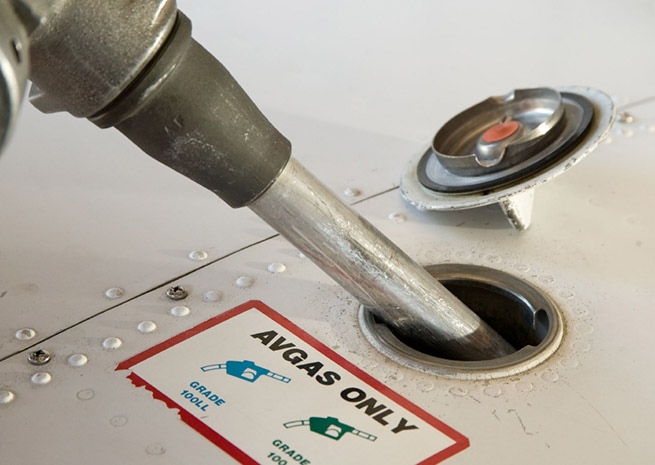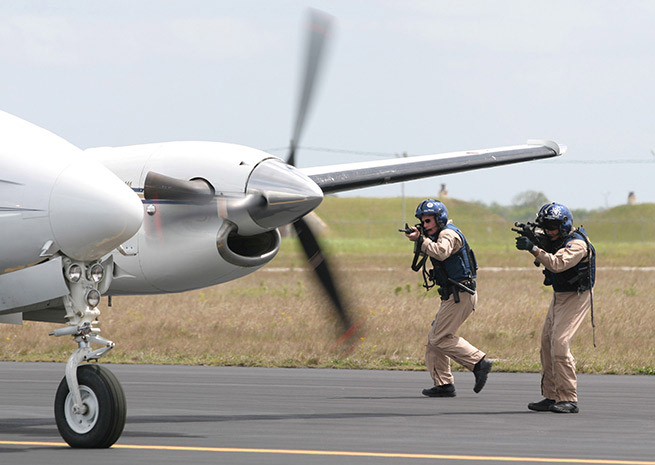You might think of it as job security. Or you might call it having a lot on your plate. Either way, a busy 2013 set the stage for an equally busy New Year, and AOPA is preparing for the advocacy challenges ahead.
Many of the issues that AOPA advocated on during 2013 will be back on the table in 2014. Changes to pilot medical requirements, reforms to Part 23 aircraft certification, the future of avgas, the unwarranted stops and searches of GA aircraft, and the constant pressures on community airports are just a few of the issues that require AOPA’s continued focus in 2014.
 Let’s start with the third-class medical. After waiting almost two years for the FAA to respond to the AOPA-EAA petition seeking to expand the driver’s license medical standard to more pilots and aircraft, AOPA sought help from Congress. Reps. Todd Rokita (R-Ind.), Sam Graves (R-Mo.), and other members of the House General Aviation Caucus dug into the issue, quickly producing legislation that would expand the standard even more than the AOPA-EAA proposal.
Let’s start with the third-class medical. After waiting almost two years for the FAA to respond to the AOPA-EAA petition seeking to expand the driver’s license medical standard to more pilots and aircraft, AOPA sought help from Congress. Reps. Todd Rokita (R-Ind.), Sam Graves (R-Mo.), and other members of the House General Aviation Caucus dug into the issue, quickly producing legislation that would expand the standard even more than the AOPA-EAA proposal.
The General Aviation Pilot Protection Act, or GAPPA as it is quickly becoming known, was introduced shortly before the end of the year, and it promises to remain a big issue in 2014. The bill would allow pilots to use the driver’s license medical standard for noncommercial VFR flights in aircraft weighing up to 6,000 pounds with no more than six seats. That includes virtually all single-engine and light twin airplanes with six or fewer seats. Pilots would be allowed to carry up to five passengers, fly at altitudes below 14,000 feet msl, and fly no faster than 250 knots. The act would also require the FAA to report on the safety consequences of the new rule after five years.
The bill still has many hurdles to pass before it can become law, and that’s where you come in. In the coming days, AOPA will be asking our members to contact key congressional representatives to express support for GAPPA and help build the momentum needed to get this legislation passed. Look for updates on AOPA.org and in AOPA ePilot.
Reforms to Part 23 aircraft certification standards may not be as glamorous as waving goodbye to the medical, but they are going to have a major influence on the way we fly for generations to come. This is an issue AOPA has been involved in for several years, and it’s one the association will devote hundreds of man-hours to in 2014.
 The Small Airplane Revitalization Act became law in late 2013, setting a December 2015 deadline for the FAA to reform and streamline Part 23 of the federal aviation regulations, which governs the certification of many new general aviation aircraft as well as affecting how modifications are made to older airplanes. The planned changes to Part 23 were designed to create “twice the safety at half the cost,” making it more affordable to make safety improvements to the existing fleet while reducing the cost of bringing innovative new designs to market.
The Small Airplane Revitalization Act became law in late 2013, setting a December 2015 deadline for the FAA to reform and streamline Part 23 of the federal aviation regulations, which governs the certification of many new general aviation aircraft as well as affecting how modifications are made to older airplanes. The planned changes to Part 23 were designed to create “twice the safety at half the cost,” making it more affordable to make safety improvements to the existing fleet while reducing the cost of bringing innovative new designs to market.
While the new law highlights the importance and urgency of reform, much remains to be done, and AOPA will continue to be engaged at all levels, serving on the FAA’s ASTM F44 Committee, which is developing the industry consensus standards that will be leveraged by the Part 23 rulemaking effort.
Modernizing Part 23 is a huge undertaking, but even that pales in comparison to the work that must go into finding and certifying an unleaded replacement for avgas. Three-quarters of the U.S. general aviation fleet—167,000 aircraft out of a total of 220,000—is certified to fly on leaded fuel. While some of those aircraft could operate safely on lower octane fuels, high-performance aircraft cannot.
 So AOPA’s top priority on this issue is making sure avgas remains widely available while the hunt for alternatives continues. Advocating for the continued availability of avgas means making Congress and various government agencies, including the Environmental Protection Agency, aware of the importance of keeping GA aircraft flying.
So AOPA’s top priority on this issue is making sure avgas remains widely available while the hunt for alternatives continues. Advocating for the continued availability of avgas means making Congress and various government agencies, including the Environmental Protection Agency, aware of the importance of keeping GA aircraft flying.
But AOPA is also heavily engaged in making sure that the testing and certification process respects the needs of general aviation. In part, any avgas replacement must provide the necessary performance and safety margins. It must also be widely available, affordable, and sustainable. Several companies have indicated they have high-octane fuels that could be suitable for general aviation. And the FAA is inviting candidate fuels to be part of the agency’s centralized testing program.
AOPA continues to work closely with other GA organizations, the petroleum industry, and the FAA to support the development of alternatives to leaded avgas, serving on the Piston Aviation Fuels Initiative (PAFI). PAFI is a government-industry group created to provide a path forward for the identification, evaluation, and fleetwide deployment of the most promising replacements for leaded fuel. In part, the group is charged with helping to ensure fleetwide deployment is achieved with minimal disruption to the GA industry and the greatest likelihood of marketplace success.
Now for an issue that goes to the heart of AOPA’s mission of protecting the freedom to fly—the unwarranted stops and searches of general aviation aircraft by Customs and Border Protection (CBP) and other Department of Homeland Security (DHS) agencies.
AOPA has received more than 40 reports of such stops, sometimes involving dogs, drawn weapons, searches, and questioning of pilots and passengers. In each of these cases the stop was made without probable cause or reasonable suspicion that illegal activity was occurring. AOPA has been trying to get to the bottom of this issue for months, but CPB and DHS officials have been at best unhelpful and at worst dismissive of the association’s concerns. Congress has stepped in to help out, but requests for information from senators and representatives have also been ignored or inadequately answered.
 To confuse matters even more, it seems that DHS and CBP are justifying their actions using FAA regulations that require pilots to present documentation to any federal, state, or local law enforcement officer who asks. But AOPA contends those regulations don’t give law enforcement officers the right to stop the aircraft in the first place—that authority has to come from elsewhere, for example, a reasonable suspicion that illegal activity is taking place.
To confuse matters even more, it seems that DHS and CBP are justifying their actions using FAA regulations that require pilots to present documentation to any federal, state, or local law enforcement officer who asks. But AOPA contends those regulations don’t give law enforcement officers the right to stop the aircraft in the first place—that authority has to come from elsewhere, for example, a reasonable suspicion that illegal activity is taking place.
Just to be clear, AOPA is not objecting to every stop of a general aviation aircraft. But the association believes law enforcement officers must have appropriate authority and justification for making stops—and that isn’t the case in dozens of incidents reported by AOPA members. AOPA won’t stand by and see the constitutional rights of pilots systematically violated, so this will continue to be an important issue for the association in 2014.
And there will be many others—airport issues, state taxation, renewed calls for user fees, airspace concerns, NextGen implementation, unmanned aerial systems, and dozens of other issues large and small will certainly arise during 2014. Rest assured that AOPA’s team of experts is developing strategies to deal with all these challenges and standing ready to tackle anything that may happen along the way.



